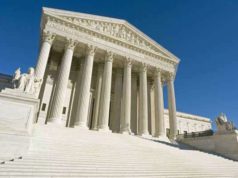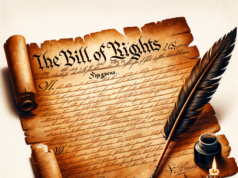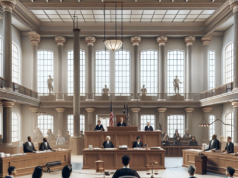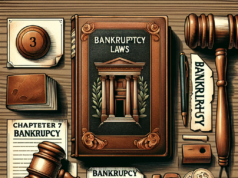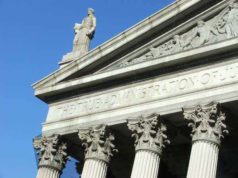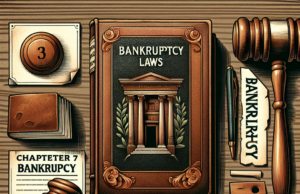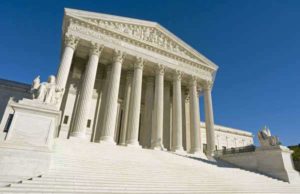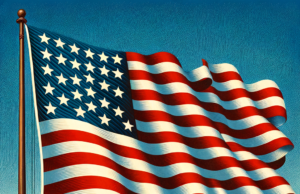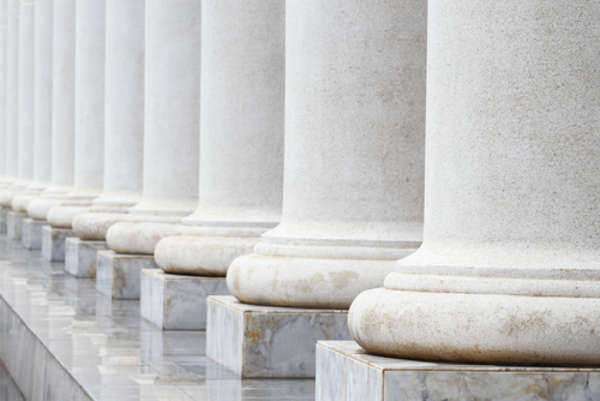
A Guide to the United States Judicial Branch
The United States government is broken up into three branches: the Executive, Legislative, and Judicial. The Judicial Branch of the United States is the branch of government that holds trials and has the power to decide cases based on the laws of the nation. The judicial branch is made up of the Supreme Court of the United States as well as all the lower federal courts. The judges of these courts are nominated by the President of the United States and are then approved of by the United States Senate. The judicial branch interprets the laws of the country and decides whether they are aligned with the United States Constitution. In the case that a situation or law does not align well with it, the law or situation is thought to be unconstitutional.
The judicial branch derives its judicial powers from Article III of the United States Constitution, which was formally adopted by the county in 1788. Prior to this, the nation did not have a separate judicial branch, but rather had Congress exercise all of the powers of the country’s government. Under Article III Section I of the U.S. Constitution, the country established the Supreme Court of the United States and gave the United States Congress the authority to establish any necessary inferior courts. Section I of Article III also sets up lifetime tenure for all of the federal judges and explicitly states that their received compensation cannot diminished during their office terms. Article II Section II of the Constitution states that all federal judges must be appointed by the President of the United States and confirmed by the Senate.
Divisions of the Judicial Branch
The Judiciary Act of 1789 was an act established a year after the adoption of the Constitution that subdivided the county jurisdictionally into different judicial districts and created federal courts specific to each district. This three tiered structure established the basic structure of the national judiciary branch, which now includes the Supreme Court, thirteen courts of appeals, 94 district courts, and two courts for special jurisdiction. The United States Congress still has the power to reorganize or potentially abolish federal courts that are lower than the United States Supreme Court as well as determine the number of judges in the federal courts. There are two different types of cases that the courts hear: civil and criminal cases. Civil cases deal with people’s rights being violated while criminal cases involve crimes that have been committed.
The Supreme Court of the United States
The United States Supreme Court adjudicates controversial cases that pertain to disputes between states, the federal government, interpreting the United States Constitution. The Supreme court can also declare an executive action or legislation created by any level of government to be unconstitutional, which nullifies the law and creates a precedent to be followed for future laws or judgments.
The United States Constitution does not explicitly sate the number of Supreme Court Justices needed. Rather, this number is set by the United States Congress. While there have been as little as six justices throughout history, after 1869 there have been nine Justices in office, including a Chief Justice. All Supreme Court Justices are nominated by the President of the United States, confirmed by the United States Senate, and have their offices for lifetime tenure. Since Justices do not deal with elections, they are considered to be protected from political pressure when presiding over cases. Justices can stay in office until they pass away, retire, or are impeached and convicted by the United States Congress.
The Constitution does not grant the power of judicial review, or declaring something unconstitutional, to the judicial branch. However, this power of judicial review for the judicial branch was asserted in Marbury V. Madison (1803) by Chief Justice Marshall. Despite this power of the judicial branch, there have been many other instances in United States history where these declarations by the Supreme Court have been ignored by the other branches of government.
United States Court of Appeals
The United States Courts of Appeals are right below Supreme Court of the United States. The court of appeals decides appeals that come out from the district courts from its own federal judicial circuit, and in some cases from other designated courts or administrative agencies.
The United States Courts of Appeals are thought of as some of the most influential and powerful courts in the United States. Because they can set legal precedent in districts that affect millions of people, these courts have strong policy influence on United States law. Furthermore, because the United States Supreme Court only hears less than 100 cases of the thousands that are filed annually, the Courts of Appeals often serve as the final arbiter on many federal cases.
Currently, there are 179 Judges on the Courts of Appeals who are authorized by Congress along with Article III of the Constitution. Like Supreme Court justices, these judges are nominated by the President, and confirmed by the Senate for an office with lifetime tenure.
Within the United States courts of appeals, there are 13 courts plus other tribunals such as the Court of Appeals for Veterans Claims or for the Armed Forces. The eleven circuits and the District of Columbia Circuit are defined geographically. The thirteenth court is the Court of Appeals for the Federal Circuit. This court has jurisdiction nationwide over certain appeals depending on their subject matter. All of these circuit courts can hear appeals from certain administrative agency rulemaking and decisions. The Federal Circuit can also hear appeals from specialized trial courts, such as the U.S. Court of International Trade or the U.S. Court of Federal Claims, along with appeals from the district courts regarding patent cases and other specialized matters.
United States District Court
The United States district courts consist of the general trial courts of the judicial branch. Both criminal and civil cases are filed in the United States district court. Each court has a United States bankruptcy court associated to it. Unlike the Supreme Court, which is established by the Constitution, the district courts were created by Congress. Each state has at least once judicial district, as well as one for Puerto Rico and the District of Columbia. In total, there are 89 districts in the fifty States, and a total of 94 districts including both states and territories.


